JS前端图形化插件之利器Gojs组件(php中文网)
JS前端图形化插件之利器Gojs组件(php中文网)
一、总结
一句话总结:php中文网我可以好好走一波
二、JS前端图形化插件之利器Gojs组件
参考:
JS前端图形化插件之利器Gojs组件-js教程-PHP中文网
http://www.php.cn/js-tutorial-382417.html
一、组件效果预览
先来两个炫酷点的效果
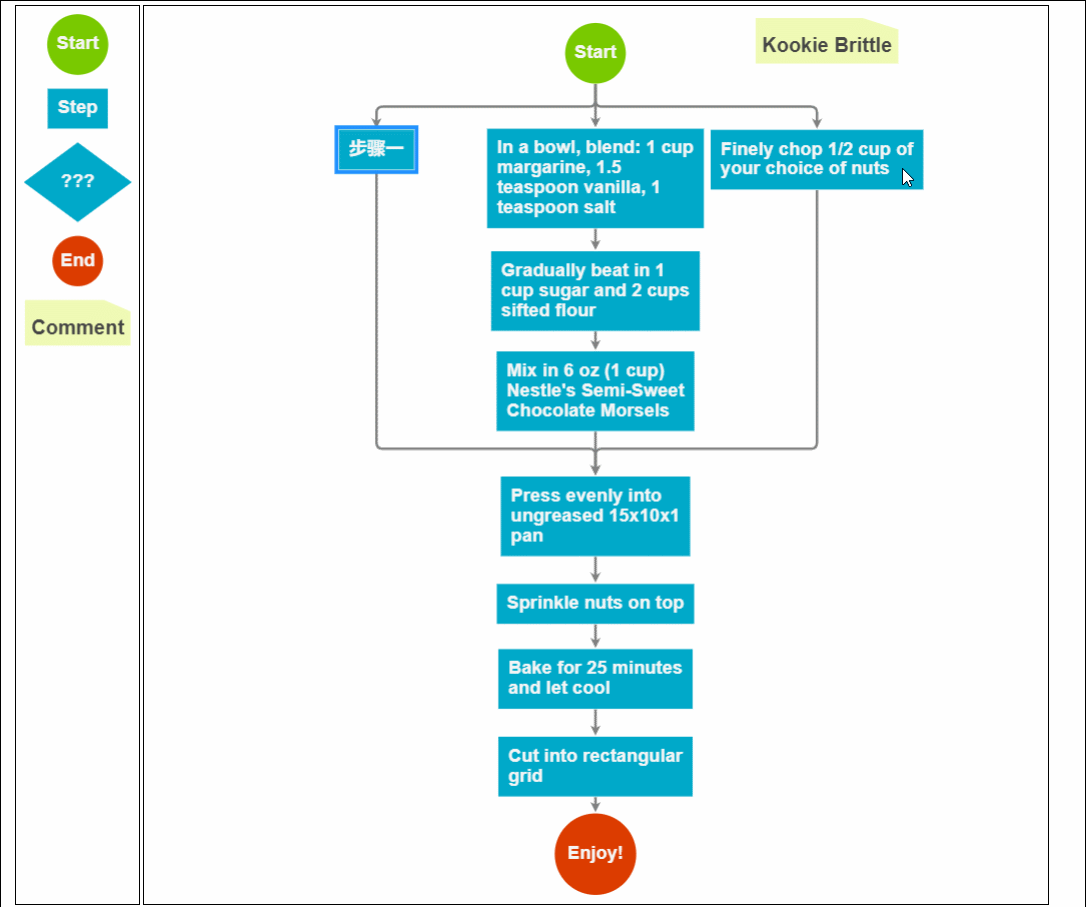
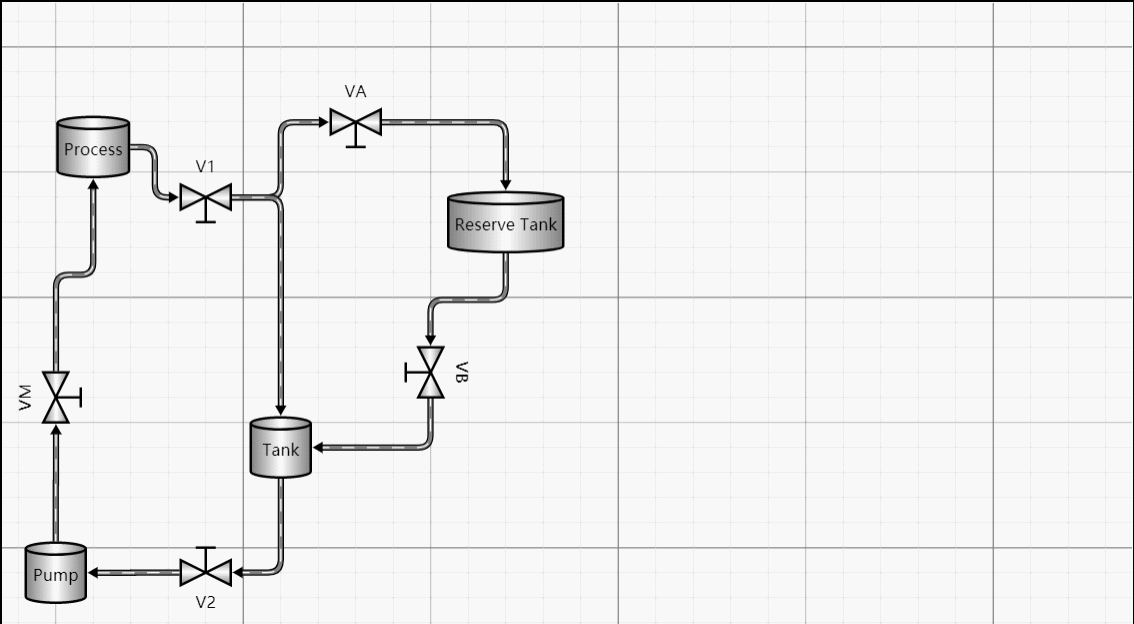
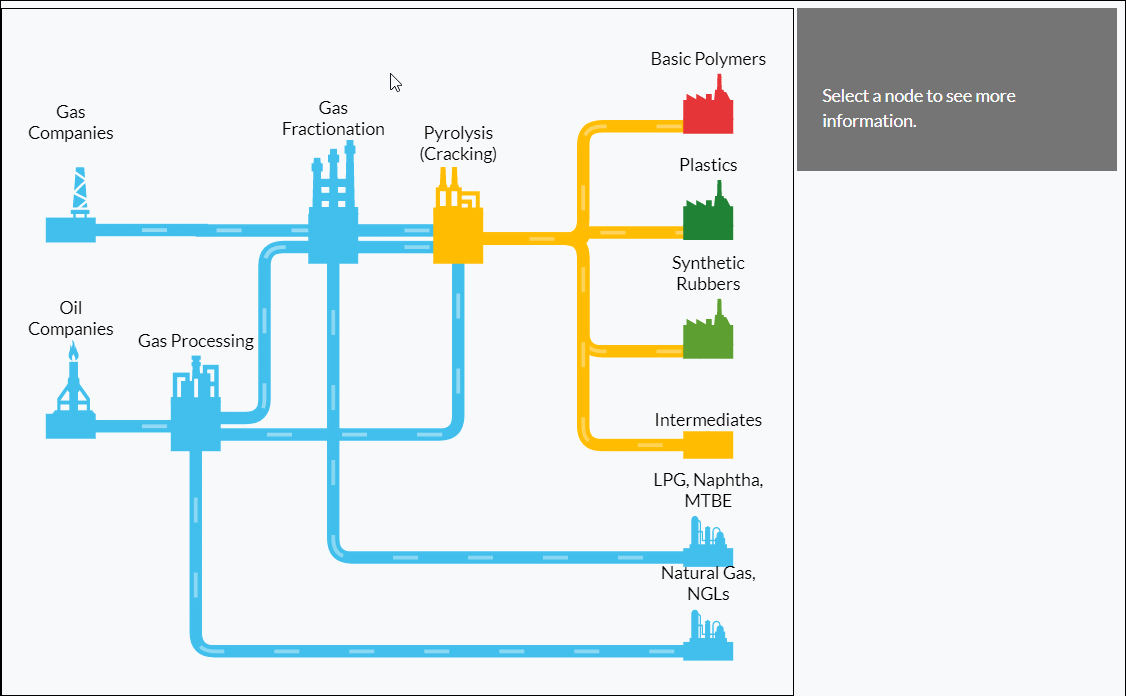
就最下面两个效果而言,就是jsPlumb无法实现的,可是这种效果在MES系统里面是很吸引人的,尤其是一些流程性的业务,用这种效果实现让可以一眼就感觉高大上了。并且咋一眼看上去,你根本都不相信这是一个web页面的效果。
其他效果示例

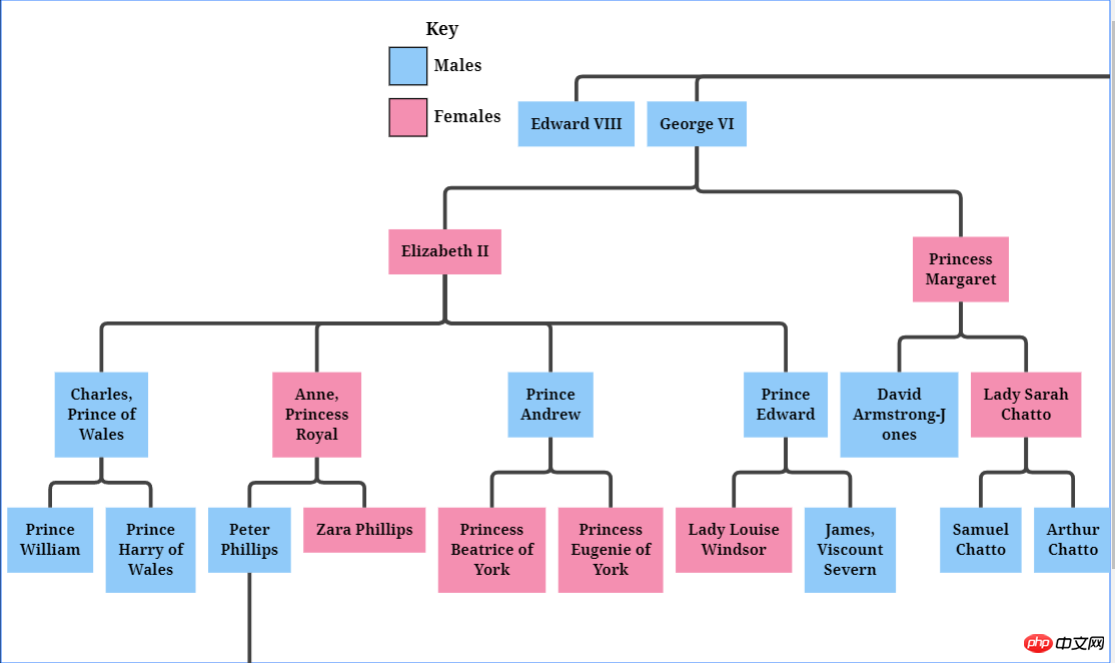
可折叠的树

这是图片吗?
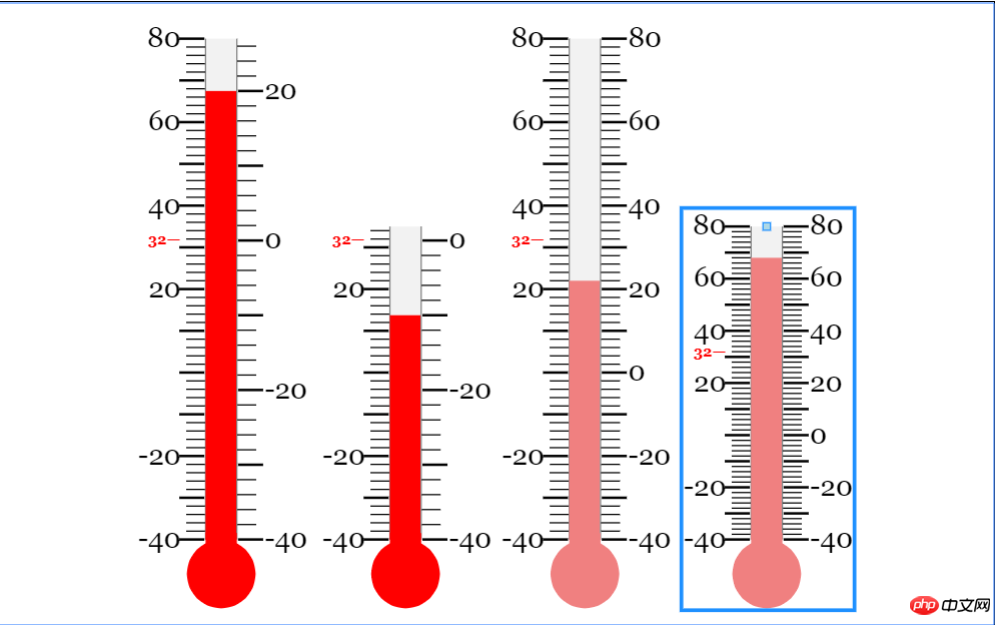
竟然还可以生成图表!
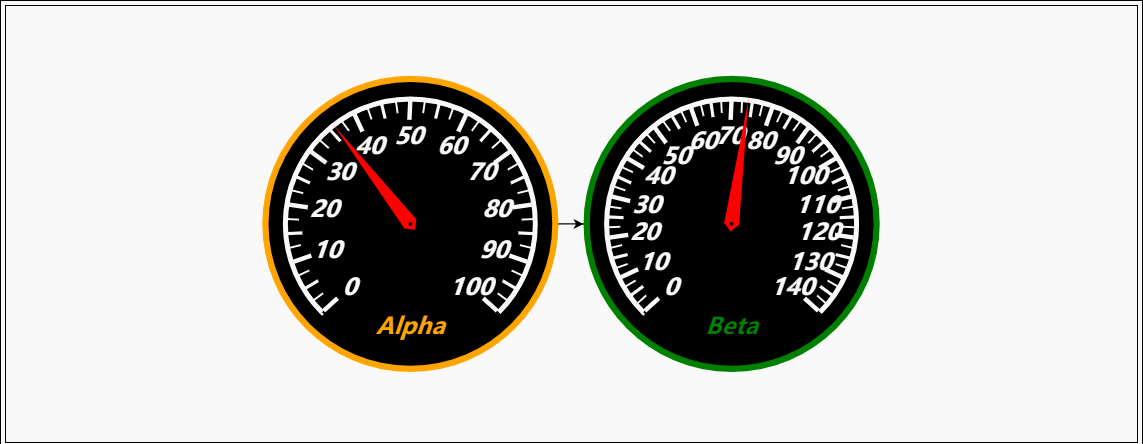
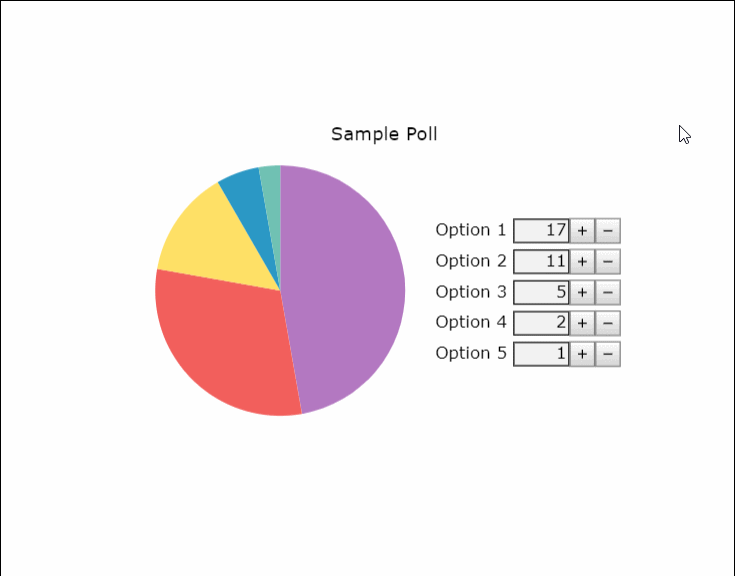

想抢visio的饭碗吗?
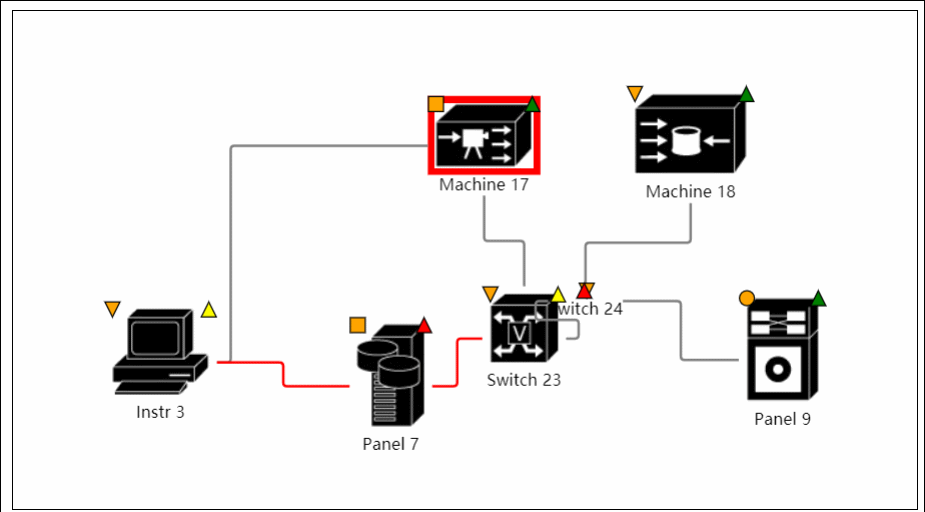

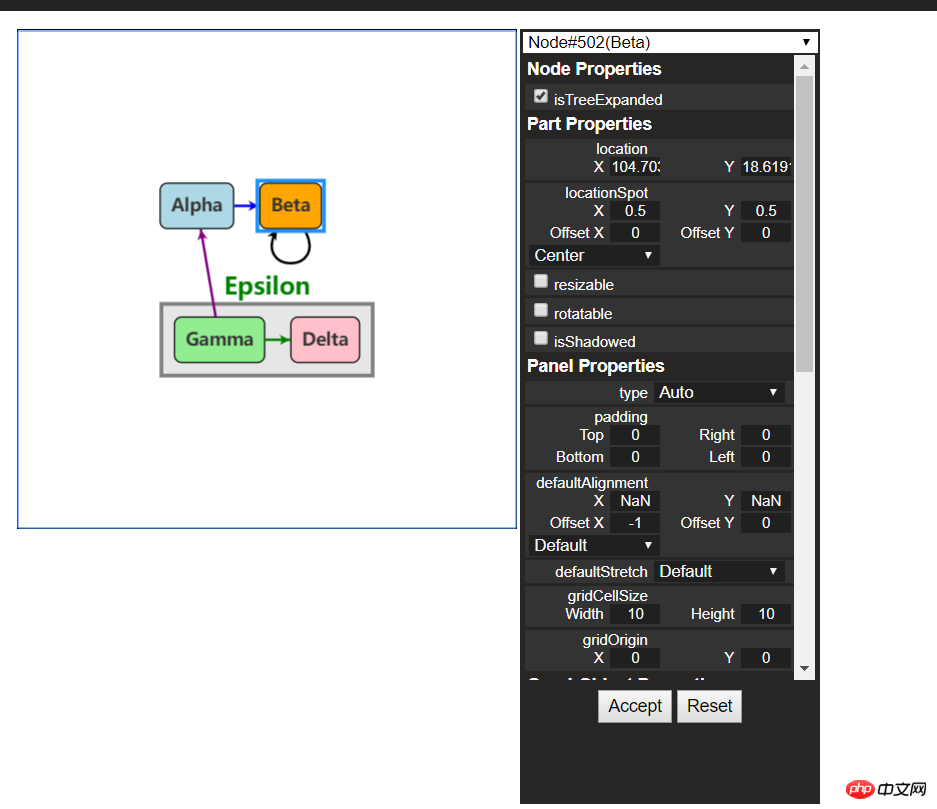
更多示例可查看官网
二、初次接触
1、Gojs简介
GoJS是一个功能丰富的JS库,在Web浏览器和平台上可实现自定义交互图和复杂的可视化效果,它用自定义模板和布局组件简化了节点、链接和分组等复杂的JS图表,给用户交互提供了许多先进的功能,如拖拽、复制、粘贴、文本编辑、工具提示、上下文菜单、自动布局、模板、数据绑定和模型、事务状态和撤销管理、调色板、概述、事件处理程序、命令和自定义操作的扩展工具系统。无需切换服务器和插件,GoJS就能实现用户互动并在浏览器中完全运行,呈现HTML5 Canvas元素或SVG,也不用服务器端请求。 GoJS不依赖于任何JS库或框架(例如bootstrap、jquery等),可与任何HTML或JS框架配合工作,甚至可以不用框架。
2、使用入门
(1)文件引用
复制代码 代码如下:
- <script src="gojs/go-debug_ok.js"></script>
可以用cdn上面的最新版本,也可以引用本地down下来的文件。如果是开发,可以引用debug版本的js,正式运行的时候引用正式的js,这个无需多讲。
(2)创建画布
随便定义一个html元素,作为我们的画布
复制代码 代码如下:
- <p id="myDiagramp" style="margin:auto;width:300px; height:300px; background-color:#ddd;"></p>
然后使用gojs的api初始化画布
- //创建画布
- var objGo = go.GraphObject.make;
- var myDiagram = objGo(go.Diagram, "myDiagramp",
- {
- //模型图的中心位置所在坐标
- initialContentAlignment: go.Spot.Center,
- //允许用户操作图表的时候使用Ctrl-Z撤销和Ctrl-Y重做快捷键
- "undoManager.isEnabled": true,
- //不运行用户改变图表的规模
- allowZoom: false,
- //画布上面是否出现网格
- "grid.visible": true,
- //允许在画布上面双击的时候创建节点
- "clickCreatingTool.archetypeNodeData": { text: "Node" },
- //允许使用ctrl+c、ctrl+v复制粘贴
- "commandHandler.copiesTree": true,
- //允许使用delete键删除节点
- "commandHandler.deletesTree": true,
- // dragging for both move and copy
- "draggingTool.dragsTree": true,
- });
官方示例用的$符号作为变量,博主觉得$符号太敏感,还是换个名字吧~以上几个参数都是博主摘选的,更多初始化画布的参数请参考官方api下图:

(3)创建模型数据(Model)
接着上面的代码,我们增加如下几行
- var myModel = objGo(go.Model);//创建Model对象
- // model中的数据每一个js对象都代表着一个相应的模型图中的元素
- myModel.nodeDataArray = [
- { key: "工厂" },
- { key: "车间" },
- { key: "工人" },
- { key: "岗位" },
- ];
- myDiagram.model = myModel; //将模型数据绑定到画布图上
效果预览
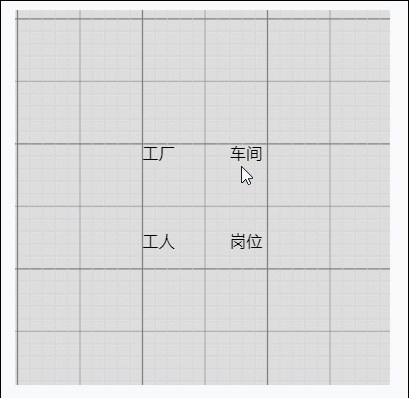
(4)创建节点(Node)
上面有了画布和节点数据,只是有了一个雏形,但是还没有任何的图形化效果。我们加入一些效果试试
在gojs里面给我们提供了几种模型节点的可选项:
Shape:形状——Rectangle(矩形)、RoundedRectangle(圆角矩形),Ellipse(椭圆形),Triangle(三角形),Diamond(菱形),Circle(圆形)等
TextBlock:文本域(可编辑)
Picture:图片
Panel:容器来保存其他Node的集合
默认的节点模型代码只是由一个TextBlock组件构建成
我们增加如下一段代码
- // 定义一个简单的节点模板
- myDiagram.nodeTemplate =
- objGo(go.Node, "Horizontal",//横向布局的面板
- // 节点淡蓝色背景
- { background: "#44CCFF" },
- objGo(go.Shape,
- "RoundedRectangle", //定义形状,这是圆角矩形
- { /* Shape的参数。宽高颜色等等*/figure: "Club", width: 40, height: 60, margin: 4, fill: 'red' },
- // 绑定 Shape.figure属性为Node.data.fig的值,Model对象可以通过Node.data.fig 获取和设置Shape.figure(修改形状)
- new go.Binding("figure", "fig"), new go.Binding('fill', 'fill2')),
- objGo(go.TextBlock,
- "Default Text", // 默认文本
- // 设置字体大小颜色以及边距
- { margin: 12, stroke: "white", font: "bold 16px sans-serif" },
- //绑定TextBlock.text 属性为Node.data.name的值,Model对象可以通过Node.data.name获取和设置TextBlock.text
- new go.Binding("text", "name"))
- );
- var myModel = objGo(go.Model);//创建Model对象
- // model中的数据每一个js对象都代表着一个相应的模型图中的元素
- myModel.nodeDataArray = [
- { name: "工厂", fig: 'YinYang', fill2: 'blue' },
- { name: "车间", fig: 'Peace', fill2: 'red' },
- { name: "工人", fig: 'NotAllowed', fill2: 'green' },
- { name: "岗位", fig: 'Fragile', fill2: 'yellow' },
- ];
- myDiagram.model = myModel; //将模型数据绑定到画布图上
代码释疑:以上我们给画布对象定义了两种节点模板,一种是文本节点,另一种是形状节点(Node)。在形状节点中,我们定义了数据模型的通用节点样式,就是这一段代码{ /* Shape的参数。宽高颜色等等*/figure: "Club", width: 40, height: 60, margin: 4, fill: 'red' },然后通过new go.Binding("figure", "fig")方法将模板里面的属性映射到数据实例中,比如这里模板里面的figure属性定义的是Club,如果在我们的数据里面定义fig属性,那么它就会覆盖模板里面的figure的默认值。同样,fill和fill2也是通过同样的原理去区别模板中的样式和实例中的实际样式的!
注:更多figure属性的取值详见这里
效果如下
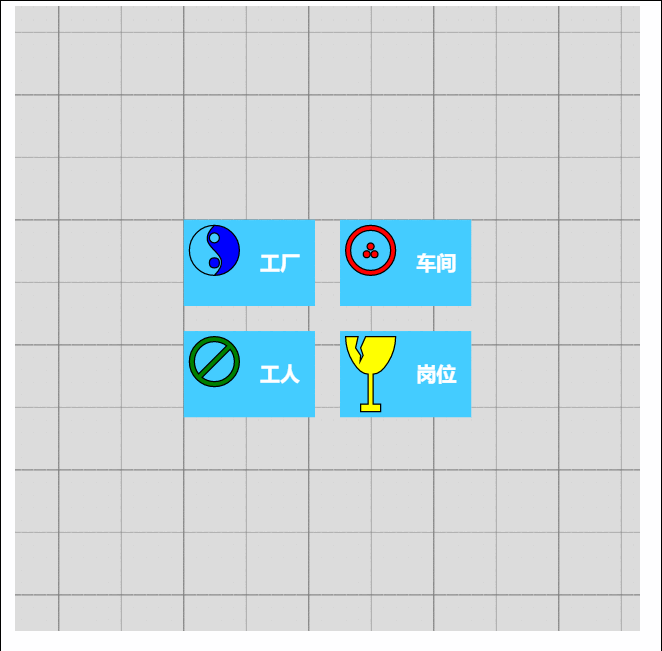
由此可见我们数据里面的属性会覆盖模板的原始属性,如果是新增的节点,由于没有自定义数据属性,所以呈现到界面上面的时候就是模板里面的原生样式!
(5)节点连线
有了上面的基础,我们可以在画布上面画出我们想要的图形效果了,可是还没有连线。我们知道连线是建立在节点模型的上面的,于是乎我们的Model又分为了以下三种类型:
Model:最基本的(不带连线,如上面的例子)
GraphLinksModel :高级点的动态连线图
TreeModel:树形图的模型(从例子看好像用的不多)
GraphLinksModel中为model.nodeDataArray提供model.linkDataArray为node节点连线保存数据模型信息,其实也是的一个JSON数组对象,每个线条都有两个属性 “to” 和 “from” 即Node节点的“key”值,两个属性代表两个key表示两个节点间的连线。
我们上面已经写过最基本的Model的例子了,我们再来个带连线的Model的示例
- var myModel = objGo(go.GraphLinksModel);
- myModel.nodeDataArray =
- [
- { key: "aaa" ,name: "工厂" },
- { key: "bbb" ,name: "车间"},
- { key: "ccc" ,name: "车间" }
- ];
- myModel.linkDataArray =
- [
- { from: "aaa", to: "bbb" },
- { from: "bbb", to: "ccc" }
- ];
- myDiagram.model = myModel;
效果如下
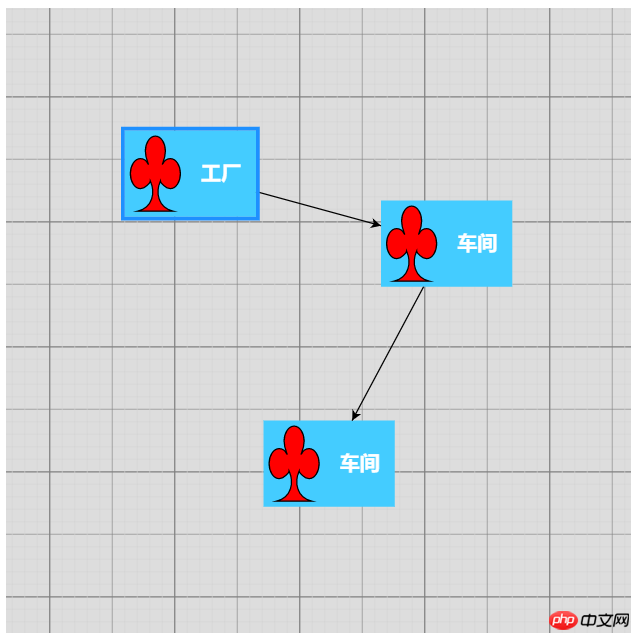
学习了Model、GraphLinksModel,还剩下一种TreeModel树节点的模型,这个博主不打算做详细介绍,有兴趣可以直接查看官网。
三、综合效果
关于综合效果,博主不打算将gojs的api逐个翻个遍了,这样太耗时间,伤不起,只是将官方示例中的部分源码截取出来供大家参考。有需要的再细究!
1、自定义流程的使用
- <!DOCTYPE html>
- <html>
- <head>
- <meta name="viewport" content="width=device-width, initial-scale=1">
- <title>Draggable Link</title>
- <meta name="description" content="Drag a link to reconnect it. Nodes have custom Adornments for selection, resizing, and reshaping." />
- <!-- Copyright 1998-2017 by Northwoods Software Corporation. -->
- <meta charset="UTF-8">
- <script src="../../gojs/go-debug.js"></script>
- <script id="code">
- function init() {
- if (window.goSamples) goSamples(); // init for these samples -- you don't need to call this
- var objGo = go.GraphObject.make; // for conciseness in defining templates
- myDiagram =
- objGo(go.Diagram, "myDiagramp", // must name or refer to the p HTML element
- {
- grid: objGo(go.Panel, "Grid",
- objGo(go.Shape, "LineH", { stroke: "lightgray", strokeWidth: 0.5 }),
- objGo(go.Shape, "LineH", { stroke: "gray", strokeWidth: 0.5, interval: 10 }),
- objGo(go.Shape, "LineV", { stroke: "lightgray", strokeWidth: 0.5 }),
- objGo(go.Shape, "LineV", { stroke: "gray", strokeWidth: 0.5, interval: 10 })
- ),
- allowDrop: true, // must be true to accept drops from the Palette
- "draggingTool.dragsLink": true,
- "draggingTool.isGridSnapEnabled": true,
- "linkingTool.isUnconnectedLinkValid": true,
- "linkingTool.portGravity": 20,
- "relinkingTool.isUnconnectedLinkValid": true,
- "relinkingTool.portGravity": 20,
- "relinkingTool.fromHandleArchetype":
- objGo(go.Shape, "Diamond", { segmentIndex: 0, cursor: "pointer", desiredSize: new go.Size(8, 8), fill: "tomato", stroke: "darkred" }),
- "relinkingTool.toHandleArchetype":
- objGo(go.Shape, "Diamond", { segmentIndex: -1, cursor: "pointer", desiredSize: new go.Size(8, 8), fill: "darkred", stroke: "tomato" }),
- "linkReshapingTool.handleArchetype":
- objGo(go.Shape, "Diamond", { desiredSize: new go.Size(7, 7), fill: "lightblue", stroke: "deepskyblue" }),
- rotatingTool: objGo(TopRotatingTool), // defined below
- "rotatingTool.snapAngleMultiple": 15,
- "rotatingTool.snapAngleEpsilon": 15,
- "undoManager.isEnabled": true
- });
- // when the document is modified, add a "*" to the title and enable the "Save" button
- myDiagram.addDiagramListener("Modified", function(e) {
- var button = document.getElementById("SaveButton");
- if (button) button.disabled = !myDiagram.isModified;
- var idx = document.title.indexOf("*");
- if (myDiagram.isModified) {
- if (idx < 0) document.title += "*";
- } else {
- if (idx >= 0) document.title = document.title.substr(0, idx);
- }
- });
- // Define a function for creating a "port" that is normally transparent.
- // The "name" is used as the GraphObject.portId, the "spot" is used to control how links connect
- // and where the port is positioned on the node, and the boolean "output" and "input" arguments
- // control whether the user can draw links from or to the port.
- function makePort(name, spot, output, input) {
- // the port is basically just a small transparent square
- return objGo(go.Shape, "Circle",
- {
- fill: null, // not seen, by default; set to a translucent gray by showSmallPorts, defined below
- stroke: null,
- desiredSize: new go.Size(7, 7),
- alignment: spot, // align the port on the main Shape
- alignmentFocus: spot, // just inside the Shape
- portId: name, // declare this object to be a "port"
- fromSpot: spot, toSpot: spot, // declare where links may connect at this port
- fromLinkable: output, toLinkable: input, // declare whether the user may draw links to/from here
- cursor: "pointer" // show a different cursor to indicate potential link point
- });
- }
- var nodeSelectionAdornmentTemplate =
- objGo(go.Adornment, "Auto",
- objGo(go.Shape, { fill: null, stroke: "deepskyblue", strokeWidth: 1.5, strokeDashArray: [4, 2] }),
- objGo(go.Placeholder)
- );
- var nodeResizeAdornmentTemplate =
- objGo(go.Adornment, "Spot",
- { locationSpot: go.Spot.Right },
- objGo(go.Placeholder),
- objGo(go.Shape, { alignment: go.Spot.TopLeft, cursor: "nw-resize", desiredSize: new go.Size(6, 6), fill: "lightblue", stroke: "deepskyblue" }),
- objGo(go.Shape, { alignment: go.Spot.Top, cursor: "n-resize", desiredSize: new go.Size(6, 6), fill: "lightblue", stroke: "deepskyblue" }),
- objGo(go.Shape, { alignment: go.Spot.TopRight, cursor: "ne-resize", desiredSize: new go.Size(6, 6), fill: "lightblue", stroke: "deepskyblue" }),
- objGo(go.Shape, { alignment: go.Spot.Left, cursor: "w-resize", desiredSize: new go.Size(6, 6), fill: "lightblue", stroke: "deepskyblue" }),
- objGo(go.Shape, { alignment: go.Spot.Right, cursor: "e-resize", desiredSize: new go.Size(6, 6), fill: "lightblue", stroke: "deepskyblue" }),
- objGo(go.Shape, { alignment: go.Spot.BottomLeft, cursor: "se-resize", desiredSize: new go.Size(6, 6), fill: "lightblue", stroke: "deepskyblue" }),
- objGo(go.Shape, { alignment: go.Spot.Bottom, cursor: "s-resize", desiredSize: new go.Size(6, 6), fill: "lightblue", stroke: "deepskyblue" }),
- objGo(go.Shape, { alignment: go.Spot.BottomRight, cursor: "sw-resize", desiredSize: new go.Size(6, 6), fill: "lightblue", stroke: "deepskyblue" })
- );
- var nodeRotateAdornmentTemplate =
- objGo(go.Adornment,
- { locationSpot: go.Spot.Center, locationObjectName: "CIRCLE" },
- objGo(go.Shape, "Circle", { name: "CIRCLE", cursor: "pointer", desiredSize: new go.Size(7, 7), fill: "lightblue", stroke: "deepskyblue" }),
- objGo(go.Shape, { geometryString: "M3.5 7 L3.5 30", isGeometryPositioned: true, stroke: "deepskyblue", strokeWidth: 1.5, strokeDashArray: [4, 2] })
- );
- myDiagram.nodeTemplate =
- objGo(go.Node, "Spot",
- { locationSpot: go.Spot.Center },
- new go.Binding("location", "loc", go.Point.parse).makeTwoWay(go.Point.stringify),
- { selectable: true, selectionAdornmentTemplate: nodeSelectionAdornmentTemplate },
- { resizable: true, resizeObjectName: "PANEL", resizeAdornmentTemplate: nodeResizeAdornmentTemplate },
- { rotatable: true, rotateAdornmentTemplate: nodeRotateAdornmentTemplate },
- new go.Binding("angle").makeTwoWay(),
- // the main object is a Panel that surrounds a TextBlock with a Shape
- objGo(go.Panel, "Auto",
- { name: "PANEL" },
- new go.Binding("desiredSize", "size", go.Size.parse).makeTwoWay(go.Size.stringify),
- objGo(go.Shape, "Rectangle", // default figure
- {
- portId: "", // the default port: if no spot on link data, use closest side
- fromLinkable: true, toLinkable: true, cursor: "pointer",
- fill: "white", // default color
- strokeWidth: 2
- },
- new go.Binding("figure"),
- new go.Binding("fill")),
- objGo(go.TextBlock,
- {
- font: "bold 11pt Helvetica, Arial, sans-serif",
- margin: 8,
- maxSize: new go.Size(160, NaN),
- wrap: go.TextBlock.WrapFit,
- editable: true
- },
- new go.Binding("text").makeTwoWay())
- ),
- // four small named ports, one on each side:
- makePort("T", go.Spot.Top, false, true),
- makePort("L", go.Spot.Left, true, true),
- makePort("R", go.Spot.Right, true, true),
- makePort("B", go.Spot.Bottom, true, false),
- { // handle mouse enter/leave events to show/hide the ports
- mouseEnter: function(e, node) { showSmallPorts(node, true); },
- mouseLeave: function(e, node) { showSmallPorts(node, false); }
- }
- );
- function showSmallPorts(node, show) {
- node.ports.each(function(port) {
- if (port.portId !== "") { // don't change the default port, which is the big shape
- port.fill = show ? "rgba(0,0,0,.3)" : null;
- }
- });
- }
- var linkSelectionAdornmentTemplate =
- objGo(go.Adornment, "Link",
- objGo(go.Shape,
- // isPanelMain declares that this Shape shares the Link.geometry
- { isPanelMain: true, fill: null, stroke: "deepskyblue", strokeWidth: 0 }) // use selection object's strokeWidth
- );
- myDiagram.linkTemplate =
- objGo(go.Link, // the whole link panel
- { selectable: true, selectionAdornmentTemplate: linkSelectionAdornmentTemplate },
- { relinkableFrom: true, relinkableTo: true, reshapable: true },
- {
- routing: go.Link.AvoidsNodes,
- curve: go.Link.JumpOver,
- corner: 5,
- toShortLength: 4
- },
- new go.Binding("points").makeTwoWay(),
- objGo(go.Shape, // the link path shape
- { isPanelMain: true, strokeWidth: 2 }),
- objGo(go.Shape, // the arrowhead
- { toArrow: "Standard", stroke: null }),
- objGo(go.Panel, "Auto",
- new go.Binding("visible", "isSelected").ofObject(),
- objGo(go.Shape, "RoundedRectangle", // the link shape
- { fill: "#F8F8F8", stroke: null }),
- objGo(go.TextBlock,
- {
- textAlign: "center",
- font: "10pt helvetica, arial, sans-serif",
- stroke: "#919191",
- margin: 2,
- minSize: new go.Size(10, NaN),
- editable: true
- },
- new go.Binding("text").makeTwoWay())
- )
- );
- load(); // load an initial diagram from some JSON text
- // initialize the Palette that is on the left side of the page
- myPalette =
- objGo(go.Palette, "myPalettep", // must name or refer to the p HTML element
- {
- maxSelectionCount: 1,
- nodeTemplateMap: myDiagram.nodeTemplateMap, // share the templates used by myDiagram
- linkTemplate: // simplify the link template, just in this Palette
- objGo(go.Link,
- { // because the GridLayout.alignment is Location and the nodes have locationSpot == Spot.Center,
- // to line up the Link in the same manner we have to pretend the Link has the same location spot
- locationSpot: go.Spot.Center,
- selectionAdornmentTemplate:
- objGo(go.Adornment, "Link",
- { locationSpot: go.Spot.Center },
- objGo(go.Shape,
- { isPanelMain: true, fill: null, stroke: "deepskyblue", strokeWidth: 0 }),
- objGo(go.Shape, // the arrowhead
- { toArrow: "Standard", stroke: null })
- )
- },
- {
- routing: go.Link.AvoidsNodes,
- curve: go.Link.JumpOver,
- corner: 5,
- toShortLength: 4
- },
- new go.Binding("points"),
- objGo(go.Shape, // the link path shape
- { isPanelMain: true, strokeWidth: 2 }),
- objGo(go.Shape, // the arrowhead
- { toArrow: "Standard", stroke: null })
- ),
- model: new go.GraphLinksModel([ // specify the contents of the Palette
- { text: "Start", figure: "Circle", fill: "#00AD5F" },
- { text: "Step" },
- { text: "DB", figure: "Database", fill: "lightgray" },
- { text: "???", figure: "Diamond", fill: "lightskyblue" },
- { text: "End", figure: "Circle", fill: "#CE0620" },
- { text: "Comment", figure: "RoundedRectangle", fill: "lightyellow" }
- ], [
- // the Palette also has a disconnected Link, which the user can drag-and-drop
- { points: new go.List(go.Point).addAll([new go.Point(0, 0), new go.Point(30, 0), new go.Point(30, 40), new go.Point(60, 40)]) }
- ])
- });
- }
- function TopRotatingTool() {
- go.RotatingTool.call(this);
- }
- go.Diagram.inherit(TopRotatingTool, go.RotatingTool);
- /** @override */
- TopRotatingTool.prototype.updateAdornments = function(part) {
- go.RotatingTool.prototype.updateAdornments.call(this, part);
- var adornment = part.findAdornment("Rotating");
- if (adornment !== null) {
- adornment.location = part.rotateObject.getDocumentPoint(new go.Spot(0.5, 0, 0, -30)); // above middle top
- }
- };
- /** @override */
- TopRotatingTool.prototype.rotate = function(newangle) {
- go.RotatingTool.prototype.rotate.call(this, newangle + 90);
- };
- // end of TopRotatingTool class
- // Show the diagram's model in JSON format that the user may edit
- function save() {
- saveDiagramProperties(); // do this first, before writing to JSON
- document.getElementById("mySavedModel").value = myDiagram.model.toJson();
- myDiagram.isModified = false;
- }
- function load() {
- myDiagram.model = go.Model.fromJson(document.getElementById("mySavedModel").value);
- loadDiagramProperties(); // do this after the Model.modelData has been brought into memory
- }
- function saveDiagramProperties() {
- myDiagram.model.modelData.position = go.Point.stringify(myDiagram.position);
- }
- function loadDiagramProperties(e) {
- // set Diagram.initialPosition, not Diagram.position, to handle initialization side-effects
- var pos = myDiagram.model.modelData.position;
- if (pos) myDiagram.initialPosition = go.Point.parse(pos);
- }
- </script>
- </head>
- <body onload="init()">
- <p id="sample">
- <p style="width:100%; white-space:nowrap;">
- <span style="display: inline-block; vertical-align: top; width:105px">
- <p id="myPalettep" style="border: solid 1px black; height: 620px"></p>
- </span>
- <span style="display: inline-block; vertical-align: top; width:80%">
- <p id="myDiagramp" style="border: solid 1px black; height: 620px"></p>
- </span>
- </p>
- <p>
- This sample demonstrates the ability for the user to drag around a Link as if it were a Node.
- When either end of the link passes over a valid port, the port is highlighted.
- </p>
- <p>
- The link-dragging functionality is enabled by setting some or all of the following properties:
- <a>DraggingTool.dragsLink</a>, <a>LinkingTool.isUnconnectedLinkValid</a>, and
- <a>RelinkingTool.isUnconnectedLinkValid</a>.
- </p>
- <p>
- Note that a Link is present in the <a>Palette</a> so that it too can be dragged out and onto
- the main Diagram. Because links are not automatically routed when either end is not connected
- with a Node, the route is provided explicitly when that Palette item is defined.
- </p>
- <p>
- This also demonstrates several custom Adornments:
- <a>Part.selectionAdornmentTemplate</a>, <a>Part.resizeAdornmentTemplate</a>, and
- <a>Part.rotateAdornmentTemplate</a>.
- </p>
- <p>
- Finally this sample demonstrates saving and restoring the <a>Diagram.position</a> as a property
- on the <a>Model.modelData</a> object that is automatically saved and restored when calling <a>Model.toJson</a>
- and <a>Model.fromJson</a>.
- </p>
- <p>
- <p>
- <button id="SaveButton" onclick="save()">Save</button>
- <button onclick="load()">Load</button>
- Diagram Model saved in JSON format:
- </p>
- <textarea id="mySavedModel" style="width:100%;height:300px">
- { "class": "go.GraphLinksModel",
- "linkFromPortIdProperty": "fromPort",
- "linkToPortIdProperty": "toPort",
- "nodeDataArray": [
- ],
- "linkDataArray": [
- ]}
- </textarea>
- </p>
- </p>
- </body>
- </html>
效果如下:
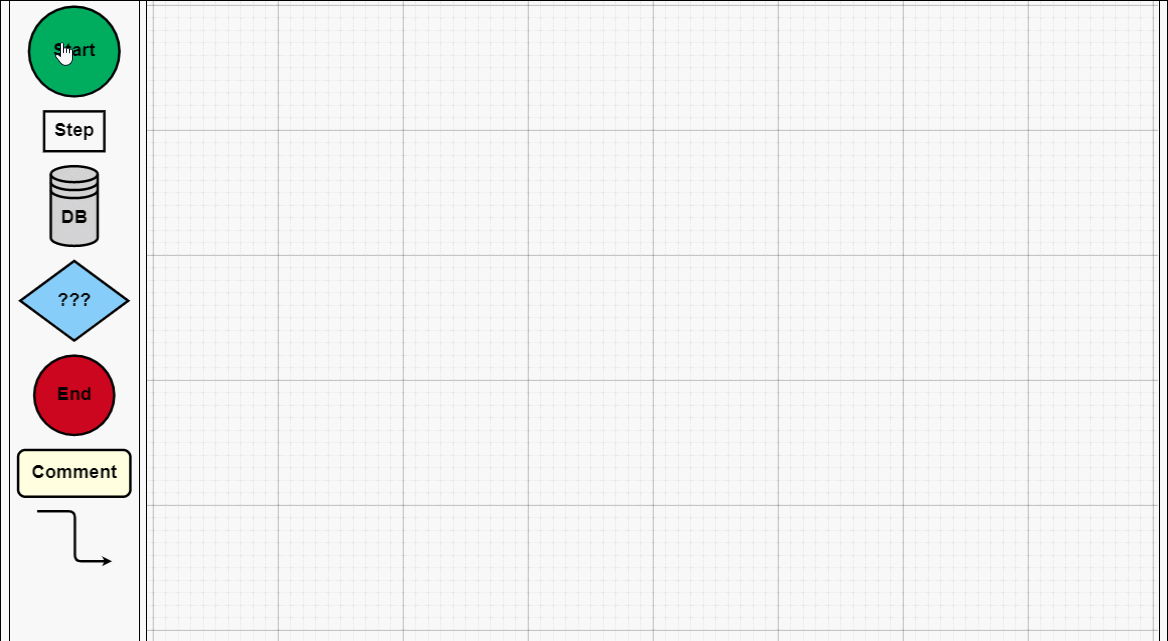
建议各位copy代码,在本地看到效果,然后再根据实际需求去研究它的api,这样才不会太盲目而花费太多时间。
2、工业流程图
- <!DOCTYPE html>
- <html>
- <head>
- <meta name="viewport" content="width=device-width, initial-scale=1">
- <title>Process Flow</title>
- <meta name="description" content="A simple process flow or SCADA diagram editor, simulating equipment monitoring and control." />
- <!-- Copyright 1998-2017 by Northwoods Software Corporation. -->
- <meta charset="UTF-8">
- <script src="../../gojs/go-debug.js"></script>
- <script id="code">
- function init() {
- if (window.goSamples) goSamples(); // init for these samples -- you don't need to call this
- var $ = go.GraphObject.make; // for more concise visual tree definitions
- myDiagram =
- $(go.Diagram, "myDiagramp",
- {
- "grid.visible": true,
- "grid.gridCellSize": new go.Size(30, 20),
- "draggingTool.isGridSnapEnabled": true,
- "resizingTool.isGridSnapEnabled": true,
- "rotatingTool.snapAngleMultiple": 90,
- "rotatingTool.snapAngleEpsilon": 45,
- "undoManager.isEnabled": true
- });
- // when the document is modified, add a "*" to the title and enable the "Save" button
- myDiagram.addDiagramListener("Modified", function(e) {
- var button = document.getElementById("SaveButton");
- if (button) button.disabled = !myDiagram.isModified;
- var idx = document.title.indexOf("*");
- if (myDiagram.isModified) {
- if (idx < 0) document.title += "*";
- } else {
- if (idx >= 0) document.title = document.title.substr(0, idx);
- }
- });
- myDiagram.nodeTemplateMap.add("Process",
- $(go.Node, "Auto",
- { locationSpot: new go.Spot(0.5, 0.5), locationObjectName: "SHAPE",
- resizable: true, resizeObjectName: "SHAPE" },
- new go.Binding("location", "pos", go.Point.parse).makeTwoWay(go.Point.stringify),
- $(go.Shape, "Cylinder1",
- { name: "SHAPE",
- strokeWidth: 2,
- fill: $(go.Brush, "Linear",
- { start: go.Spot.Left, end: go.Spot.Right,
- 0: "gray", 0.5: "white", 1: "gray" }),
- minSize: new go.Size(50, 50),
- portId: "", fromSpot: go.Spot.AllSides, toSpot: go.Spot.AllSides
- },
- new go.Binding("desiredSize", "size", go.Size.parse).makeTwoWay(go.Size.stringify)),
- $(go.TextBlock,
- { alignment: go.Spot.Center, textAlign: "center", margin: 5,
- editable: true },
- new go.Binding("text").makeTwoWay())
- ));
- myDiagram.nodeTemplateMap.add("Valve",
- $(go.Node, "Vertical",
- { locationSpot: new go.Spot(0.5, 1, 0, -21), locationObjectName: "SHAPE",
- selectionObjectName: "SHAPE", rotatable: true },
- new go.Binding("angle").makeTwoWay(),
- new go.Binding("location", "pos", go.Point.parse).makeTwoWay(go.Point.stringify),
- $(go.TextBlock,
- { alignment: go.Spot.Center, textAlign: "center", margin: 5, editable: true },
- new go.Binding("text").makeTwoWay(),
- // keep the text upright, even when the whole node has been rotated upside down
- new go.Binding("angle", "angle", function(a) { return a === 180 ? 180 : 0; }).ofObject()),
- $(go.Shape,
- { name: "SHAPE",
- geometryString: "F1 M0 0 L40 20 40 0 0 20z M20 10 L20 30 M12 30 L28 30",
- strokeWidth: 2,
- fill: $(go.Brush, "Linear", { 0: "gray", 0.35: "white", 0.7: "gray" }),
- portId: "", fromSpot: new go.Spot(1, 0.35), toSpot: new go.Spot(0, 0.35) })
- ));
- myDiagram.linkTemplate =
- $(go.Link,
- { routing: go.Link.AvoidsNodes, curve: go.Link.JumpGap, corner: 10, reshapable: true, toShortLength: 7 },
- new go.Binding("points").makeTwoWay(),
- // mark each Shape to get the link geometry with isPanelMain: true
- $(go.Shape, { isPanelMain: true, stroke: "black", strokeWidth: 5 }),
- $(go.Shape, { isPanelMain: true, stroke: "gray", strokeWidth: 3 }),
- $(go.Shape, { isPanelMain: true, stroke: "white", strokeWidth: 1, name: "PIPE", strokeDashArray: [10, 10] }),
- $(go.Shape, { toArrow: "Triangle", fill: "black", stroke: null })
- );
- load();
- loop(); // animate some flow through the pipes
- }
- function loop() {
- var diagram = myDiagram;
- setTimeout(function() {
- var oldskips = diagram.skipsUndoManager;
- diagram.skipsUndoManager = true;
- diagram.links.each(function(link) {
- var shape = link.findObject("PIPE");
- var off = shape.strokeDashOffset - 2;
- shape.strokeDashOffset = (off <= 0) ? 20 : off;
- });
- diagram.skipsUndoManager = oldskips;
- loop();
- }, 100);
- }
- function save() {
- document.getElementById("mySavedModel").value = myDiagram.model.toJson();
- myDiagram.isModified = false;
- }
- function load() {
- myDiagram.model = go.Model.fromJson(document.getElementById("mySavedModel").value);
- }
- </script>
- </head>
- <body onload="init()">
- <p id="sample">
- <p id="myDiagramp" style="border: solid 1px black; width:100%; height:500px"></p>
- <p>
- A <em>process flow diagram</em> is commonly used in chemical and process engineering to indicate the general flow of plant processes and equipment.
- A simple SCADA diagram, with animation of the flow along the pipes, is implemented here.
- </p>
- <p>
- The diagram displays the background grid layer by setting <b>grid.visible</b> to true,
- and also allows snapping to the grid using <a>DraggingTool.isGridSnapEnabled</a>,
- <a>ResizingTool.isGridSnapEnabled</a>, and <a>RotatingTool.snapAngleMultiple</a> alongside <a>RotatingTool.snapAngleEpsilon</a>.
- </p>
- <p>
- The diagram also uses the <b>loop</b> function to animate the links by adjusting the <a>Shape.strokeDashOffset</a> every 100 ms.
- </p>
- <p>
- <p>
- <button id="SaveButton" onclick="save()">Save</button>
- <button onclick="load()">Load</button>
- Diagram Model saved in JSON format:
- </p>
- <textarea id="mySavedModel" style="width:100%;height:300px">
- { "class": "go.GraphLinksModel",
- "nodeDataArray": [
- {"key":"P1", "category":"Process", "pos":"150 120", "text":"Process"},
- {"key":"P2", "category":"Process", "pos":"330 320", "text":"Tank"},
- {"key":"V1", "category":"Valve", "pos":"270 120", "text":"V1"},
- {"key":"P3", "category":"Process", "pos":"150 420", "text":"Pump"},
- {"key":"V2", "category":"Valve", "pos":"150 280", "text":"VM", "angle":270},
- {"key":"V3", "category":"Valve", "pos":"270 420", "text":"V2", "angle":180},
- {"key":"P4", "category":"Process", "pos":"450 140", "text":"Reserve Tank"},
- {"key":"V4", "category":"Valve", "pos":"390 60", "text":"VA"},
- {"key":"V5", "category":"Valve", "pos":"450 260", "text":"VB", "angle":90}
- ],
- "linkDataArray": [
- {"from":"P1", "to":"V1"},
- {"from":"P3", "to":"V2"},
- {"from":"V2", "to":"P1"},
- {"from":"P2", "to":"V3"},
- {"from":"V3", "to":"P3"},
- {"from":"V1", "to":"V4"},
- {"from":"V4", "to":"P4"},
- {"from":"V1", "to":"P2"},
- {"from":"P4", "to":"V5"},
- {"from":"V5", "to":"P2"}
- ]}
- </textarea>
- </p>
- </p>
- </body>
- </html>
工业流程图

四、总结
本文根据js的一些基础用法做了简单介绍,今天就先到这里,以后有问题了再来跟大家分享。如果你的项目里面也有这种业务需求,可以用起来试试!需要说明一点,如果您的公司不缺钱,建议使用正版授权的组件,毕竟尊重作者的劳动成果很重要!
相关推荐:
解决JS组件bootstrap table分页实现过程中遇到的问题
以上就是JS前端图形化插件之利器Gojs组件的详细内容,更多请关注php中文网其它相关文章!
JS前端图形化插件之利器Gojs组件(php中文网)的更多相关文章
- JS组件系列——Gojs组件,前端图形化插件之利器
前言:之前分享过两篇关于流程画图的前端组件,使用的jsPlumb.这个组件本身还不错,使用方便.入门简单.轻量级,但是使用一段时间下来,发现一些弊病,比如组件不太稳定,初始进入页面的时候连线的样式有时 ...
- js正则表达式图形化工具-rline
github地址:https://github.com/finance-sh/rline 在线demo: http://lihuazhai.com/demo/test.html 这是一个js正则表达式 ...
- JS图形化插件利器组件系列 —— Gojs组件
阅读目录 一.组件效果预览 二.初次接触 1.Gojs简介 2.使用入门 三.综合效果 1.自定义流程的使用 2.工业流程图 四.总结 正文 前言:之前分享过两篇关于流程画图的前端组件,使用的jsPl ...
- js前端使用jOrgChart插件实现组织架构图的展示
项目要做组织架构图,要把它做成自上而下的树形结构. 需要购买阿里云产品的,可以点击此链接购买,有红包优惠哦: https://promotion.aliyun.com/ntms/yunparter/i ...
- Windows Builder(图形化界面的利器)For Eclipse 3.7
工欲善其事,必先利其器——孔子(春秋)<论语·卫灵公> 今天闲逛论坛的时候,发现了Eclipse 的很好的插件,是关于做图形界面的. 如果想做桌面应用软件,交互界面有点复杂的时候,自己手动 ...
- 26-python图形化插件 wxpython安装时的问题
最实在而又最实用的的安装方式pip,且必须习惯使用的方式,会同步安装相关的依赖包: pip install -U wxPython 总是包超时的错误:于是更新了pip 之后还是不行,于是改为了下面的命 ...
- [Erlang07] Erlang 做图形化编程的尝试:纯Erlang做2048游戏
用Erlang久了,以为erlang做类似于As3,JS的图形化界面是绝对不可能的,多少次,多少次想用erlang做个炫酷的图形游戏.终于:折腾出来了结果:纯Erlang也可以做到! 因为以前接触过W ...
- 最好用的js前端框架、组件、文档在线预览插件
这里收集的都是个人认为比较好的js框架.组件 js前端ui框架 此处列举出个人认为最好的几个框架(排序即排名),现在好点的框架商用都需要付费,以下几个也不例外,但是由于组件丰富,都可以作为企业应用的完 ...
- 优秀的gdb图形化前端调试器
目前我自己最喜欢的还是 ddd . gdbgui 和 vim-vebugger插件或vimgdb插件 三种. You could try using Insight a graphical front ...
随机推荐
- 让人难过的 openssl_pkcs7_encrypt
让人难过的 openssl_pkcs7_encrypt 用PHP.NET的范例,没有加密结果,也没有报错信息,而openssl_pkcs7_sign()函数则返回 error opening inpu ...
- opera mini 7.5安卓改服版
opera mini 7.5安卓改服版Opera mini 7.5安卓版前两天发布了,试着进行改服实现***,过程跟以前的OPM7.0差不多,大家可参照我之前的博客教程Opera mini7.0改服教 ...
- 利用jquery.fullPage.js 和 scrolloverflow.min.js 实现滚屏效果
参考链接:https://blog.csdn.net/c11073138/article/details/79631036 /* 按着思路去search. */
- (JavaScript基础向)sort()方法里的排序函数的理解
比较常见的解释可以看这里:js的sort()方法,这篇博客写得挺好的,一般的应用的理解已经足够了. 但是如果要活用sort()方法里面的参数——也就是排序函数的话,可能就比较难理解了. 然后我就总结出 ...
- css实现背景半透明文字不透明的效果
<!DOCTYPE html> <html> <head> <meta charset="UTF-8"> <title> ...
- 【Codeforces Round #446 (Div. 2) A】Greed
[链接] 我是链接,点我呀:) [题意] 在这里输入题意 [题解] 贪心选容量大的瓶子就好 [代码] #include <bits/stdc++.h> #define int long l ...
- js进阶 13-5 jquery队列动画如何实现
js进阶 13-5 jquery队列动画如何实现 一.总结 一句话总结:同一个jquery对象,直接写多个animate()就好. 1.什么是队列动画? 比如说先左再下,而不是左下一起走 2.怎么实现 ...
- Android 自己定义主菜单
本文介绍一个超简单的自己定义主菜单.效果例如以下: 原理:事实上就是对原生的Dialog的一个简单的封装.并加上显示和隐藏的动画效果.再给控件加上回调事件. TestDialog.java publi ...
- c++11 多线程 -- 基本使用
c++11 多线程 – 基本使用 前言:这篇文章仅针对没有使用过c++11线程库的童鞋来高速入门,也是自己的一个简单记录,内容比較基础. 1.线程的基本使用 2.相互排斥量 3.条件变量 4.原子变量 ...
- FastSocket学习笔记~RPC的思想,面向对象的灵活
首先非常感谢这位来自新浪的老兄,它开发的这个FastSocket非常不错,先不说性能如何,单说它的使用方式和理念上就很让人赞口,从宏观上看,它更像是一种远程过程的调用RPC,即服务器公开一些命令,供客 ...
